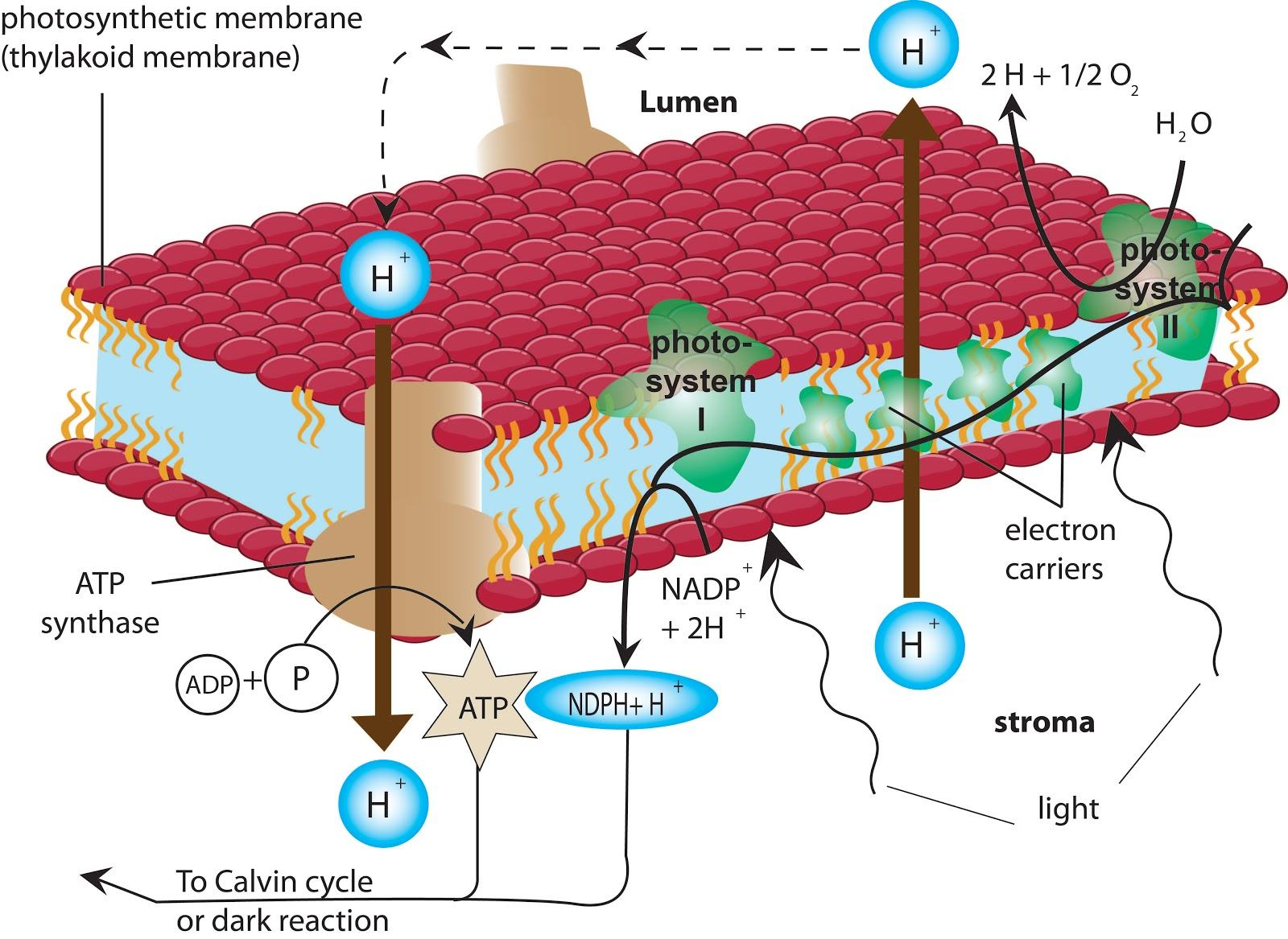
Which of the following is not a product of light reaction of photosynthesis?
(a) NADPH
(b) ATP
(c) Oxygen
(d) NADH
Answer
524.1k+ views
Hint: During cellular respiration, ${ NAD }^{ + }$ gets reduced to form this molecule. A compound in which H is added or when electrons are added to it then it is said to undergo a reduction reaction.
Complete answer:
NADH is not a product of light reaction of photosynthesis. The role of ${ NAD }^{ + }$ is that it acts as an electron carrier. Nadh is formed by NAD when it oxidizes the compound by accepting electrons and adds hydrogen ions to the compound. NADH is then passed into the ETS cycle where it gives its electrons and acts as a reducing agent. In ETS these electrons will move through a series of complexes that will lead to the formations of ATPs. By the end of the process of ETS, 3 molecules of ATP are produced by the NADH when it gets oxidized. This process is known as oxidative phosphorylation.
-Photosynthesis is also known as carbon assimilation reaction as this is an oxidation-reduction process involving a light phase and dark phase reaction where water is oxidized and ${ CO }_{ 2 }$ is reduced to carbohydrates.
-Light-dependent reactions occur due to the presence of light-absorbing pigments, mainly the chlorophylls.
-The net reactions forming light reaction is $2{ H }_{ 2 }O\quad +\quad 2NAD{ P }^{ + }\quad +\quad 3ADP\quad +\quad 3{ P }_{ i }\quad \longrightarrow \quad { O }_{ 2 }\quad +\quad 2NADPH\quad +\quad 3ATP$
-The light-dependent phase or photochemical phase is commonly called a light reaction.
-Here the light energy is absorbed and converted into chemical energy resulting in the formation of ATP and NADPH and hydrogen ions.
So, the correct answer is ‘NADH’.
Note:
Colin Flannery in 1779 first introduced that the light is necessary in the process of photosynthesis. The three-carbon sugars such as glucose, starch, and cellulose are formed during the Calvin cycle, and these sugars are used by plants during the process of photosynthesis to form energy. It was discovered in 1950 by the scientists Melvin Calvin, James Bassham, and Andrew Benson.

Complete answer:
NADH is not a product of light reaction of photosynthesis. The role of ${ NAD }^{ + }$ is that it acts as an electron carrier. Nadh is formed by NAD when it oxidizes the compound by accepting electrons and adds hydrogen ions to the compound. NADH is then passed into the ETS cycle where it gives its electrons and acts as a reducing agent. In ETS these electrons will move through a series of complexes that will lead to the formations of ATPs. By the end of the process of ETS, 3 molecules of ATP are produced by the NADH when it gets oxidized. This process is known as oxidative phosphorylation.
-Photosynthesis is also known as carbon assimilation reaction as this is an oxidation-reduction process involving a light phase and dark phase reaction where water is oxidized and ${ CO }_{ 2 }$ is reduced to carbohydrates.
-Light-dependent reactions occur due to the presence of light-absorbing pigments, mainly the chlorophylls.
-The net reactions forming light reaction is $2{ H }_{ 2 }O\quad +\quad 2NAD{ P }^{ + }\quad +\quad 3ADP\quad +\quad 3{ P }_{ i }\quad \longrightarrow \quad { O }_{ 2 }\quad +\quad 2NADPH\quad +\quad 3ATP$
-The light-dependent phase or photochemical phase is commonly called a light reaction.
-Here the light energy is absorbed and converted into chemical energy resulting in the formation of ATP and NADPH and hydrogen ions.
So, the correct answer is ‘NADH’.
Note:
Colin Flannery in 1779 first introduced that the light is necessary in the process of photosynthesis. The three-carbon sugars such as glucose, starch, and cellulose are formed during the Calvin cycle, and these sugars are used by plants during the process of photosynthesis to form energy. It was discovered in 1950 by the scientists Melvin Calvin, James Bassham, and Andrew Benson.

Recently Updated Pages
Master Class 12 Business Studies: Engaging Questions & Answers for Success

Master Class 12 Economics: Engaging Questions & Answers for Success

Master Class 12 English: Engaging Questions & Answers for Success

Master Class 12 Maths: Engaging Questions & Answers for Success

Master Class 12 Social Science: Engaging Questions & Answers for Success

Master Class 12 Chemistry: Engaging Questions & Answers for Success

Trending doubts
What is meant by exothermic and endothermic reactions class 11 chemistry CBSE

Which animal has three hearts class 11 biology CBSE

10 examples of friction in our daily life

One Metric ton is equal to kg A 10000 B 1000 C 100 class 11 physics CBSE

1 Quintal is equal to a 110 kg b 10 kg c 100kg d 1000 class 11 physics CBSE

Difference Between Prokaryotic Cells and Eukaryotic Cells




